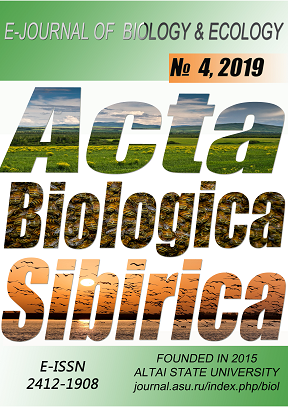Abstract
A territory mapping method has been employed in 2015 to assess the population density of 8 non-passerine and 10 passerine uncommon bird species breeding in a peri-urban riparian forest (280 ha) along Zambezi River (7 km long) near Katima Mulilo NE Namibia. The population densities (pairs per 100 ha) are estimated as follows: Trumpeter Hornbill: 1.4, Schalow’s Turaco: 2.9, Green-backer Heron: 1.1, Little Bittern: 0.4, Lesser Jacana: 0.4, African Finfoot: 0.4, White-crowned Lapwing: 0.7, Long-billed Crombec: 3.9, Yellow White-eye: 4.3, Scarlet-chested Sunbird: 0.7, African Golden Oriole: 2.9, Black-headed Oriole: 0.7, Violet-backed Starling: 0.7, Pied Wagtail: 8.6, Ashy Flycatcher: 0.4, Black Flycatcher: 0.4, Hartlaub’s Babbler: 4.3.
References
Allan DG, Jenkins AR. 1993. A count of waterbirds along a section of the lower Orange River. Bontebok 8: 33-34.
Bibby CJ, Burgess ND, Hill DA. (2012). Bird censuses techniques. London: Academic Press.
Del Hoyo J, Elliott A, Sergatal J, Chrisie DA. (eds.). 1992-2013. Handbook of the Birds of the World. Vol. 1-13. Barcelona, Lunx Edicions.
Dowsett-Lemaire F. 1988. Fruit choice and seed dissemination by birds and mammals in the evergreen forest of upland Malawi. Rev. d’Ecol. (Terre et Vie) 43: 251-283.
Fry CH, Stuart K, Urban E. 1982-2004. The birds of Africa. Vol. 1-7. Cambridge (MA, USA): Academic Press.
Harrison JA. 1997. Longbilled Crombec. In: Harrison JA. et al., editors. The Atlas of Southern African Birds. p. 266-267.
Hockey PAR, Dean WRJ, Ryan PG, Maree S. (eds.) 2005. Roberts’ Birds of Southern Africa. Cape Town: John Voelcker Bird Book Fund.
Kopij G. 2016. Birds of Katima Mulilo town, Zambezi Region, Namibia. International Science & Technology Journal of Namibia 7: 85-102.
Kopij, G. 2017. Structure of avian assemblages in Zambezian Baikiaeae woodlands, northern Namibia. Zoology & Ecology 27: 1-10.
Kopij G. 2018a. Breeding bird community of Ogongo Game Reserve, north-central Namibia. International Science & Technology Journal of Namibia 12: 117-126.
Kopij G. 2018b. Atlas of birds of Kasani. Babbler 64: 3-15.
Mendelsohn J, Jarvis A, Roberts C, Robertson T. 2009. Atlas of Namibia. A Portrait of the Land and its People. Cape Town: Sunbird Publishers.
Sutherland WJ. 1996. Ecological Census Techniques: a handbook. Cambridge (U.K.): Cambridge University Press.
Vernon C.J. 1985. Bird populations in two woods near Lake Kyale. Honeyguide 31: 148-161.
Acta Biologica Sibirica is a golden publisher, as we allow self-archiving, but most importantly we are fully transparent about your rights.
Authors may present and discuss their findings ahead of publication: at biological or scientific conferences, on preprint servers, in public databases, and in blogs, wikis, tweets, and other informal communication channels.
ABS allows authors to deposit manuscripts (currently under review or those for intended submission to ABS) in non-commercial, pre-print servers such as ArXiv.
Authors who publish with this journal agree to the following terms:
- Authors retain copyright and grant the journal right of first publication with the work simultaneously licensed under a Creative Commons Attribution License (CC BY 4.0) that allows others to share the work with an acknowledgement of the work's authorship and initial publication in this journal.
- Authors are able to enter into separate, additional contractual arrangements for the non-exclusive distribution of the journal's published version of the work (e.g., post it to an institutional repository or publish it in a book), with an acknowledgement of its initial publication in this journal.
- Authors are permitted and encouraged to post their work online (e.g., in institutional repositories or on their website) prior to and during the submission process, as it can lead to productive exchanges, as well as earlier and greater citation of published work (See The Effect of Open Access).

